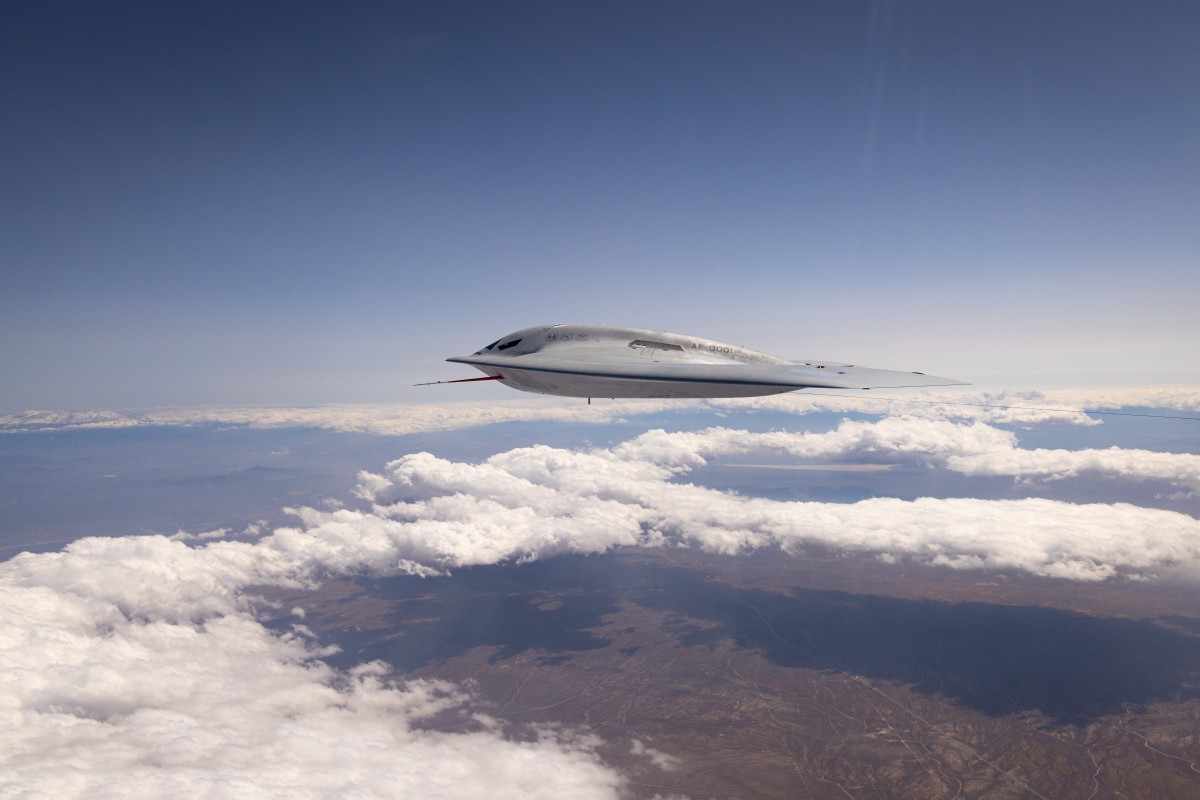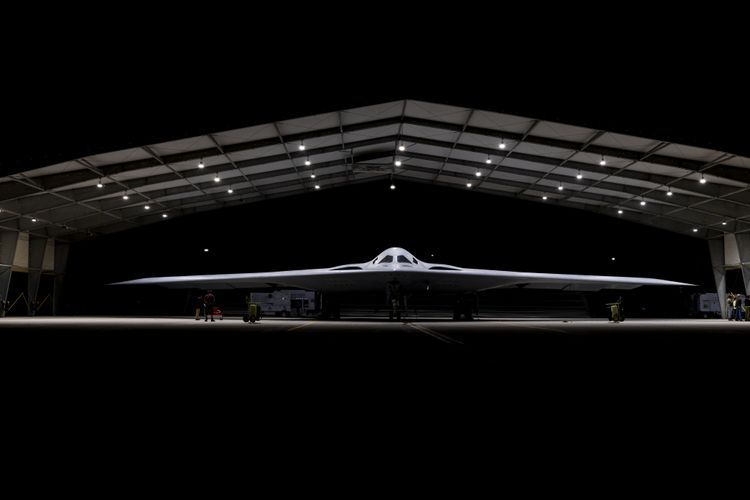After the success of Operation Midnight Hammer, the US Air Force’s top officer has drawn attention to the large number of next-generation B-21 stealth bombers that, he believes, would allow the service to effectively face the national security threats and challenges of the future.
Air Force Maj. Gen. Jason Armagost, who is currently the Eighth Air Force, to which the Air Force’s current B-2, B-1, and B-52 bombers belong, spoke about the future of US long-range bomber strikes at a webinar hosted by the Air & Space Forces Association’s Mitchell Institute for Aerospace Studies.
Armagost said that bringing in the B-21, which is currently undergoing testing, will allow the USAF to develop a bomber “campaign force” that can use a variety of bombs and launch attacks on many continents simultaneously, referring to the large number of B-21s that have been planned for purchase.
“If we get our numerical force build-out correct, which is always going to be a thing we have to be concerned about, we can build a campaign tempo. We can build diversity of munitions and options for attack. We can build out a range of capabilities that not only hold one theater at risk in conflict, but can be a ready force available if there’s … [other] things that are taking place around the globe,” he explained.
The USAF intends to purchase about 100 B-21 bombers. However, senior US military officials have been pushing for a fleet of 145 bombers, a notable increase compared to the limited number of B-2 bombers that the Raider intends to replace.
“We have to provide as many options as we can to the decision makers,” he said. “20 years from now, 10 years from now, we don’t know what those national security challenges are going to be.” There’s an “unbelievable deterrent value … when you have overwhelming capability to penetrate and hold at risk these targets around the world,” he added. Getting that number wrong would “make deterrence more fragile.”
The top bomber boss said, “In the job prior to this … I was interacting with acquisition, RCO [Air Force Rapid Capabilities Office], and Northrop Grumman in how we work together to drive the concepts, drive the requirements, drive the fielding and the manufacture, actually, of this airplane, so that it can become something different when we have it in numbers,” Armagost said.
“That’s what I’m most excited about”. “Sixth-generation stealth brings with it, it brings its own set of pretty amazing capabilities, but what I’m most excited about is the ability to build a campaign force.”
The comments come weeks after the US deployed its B-2 Spirit bombers for ‘Operation Midnight Hammer’ to bomb Iran’s nuclear facilities, reinforcing the utility of long-range stealth bombers in modern warfare.
However, Armagost warned that even though the operation was a success, “we had to be ready for what was the next question to be asked, or what was the next problem to be confronted.”

He said, although it “resulted in a ceasefire about 30 hours after the strike, “you can’t count on that to happen” in every instance. He argued that the US cannot assume that exercising long-range airpower will always mean one-off strikes.
“I can never assume that any single strike is going to be enough,” Armagost said. “We have to be ready and postured and capable of generating, very quickly … across the platforms, to bring that long-range, global capability, [and] mass to problem sets.”
He further explained that the seven B-2s involved in Midnight Hammer were able to complete the mission despite the absence of dozens more stealth bombers waiting in the wings because of the 125 aircraft that took part in the operation.
Furthermore, he said that it would not have been feasible without nearly twenty years of development on the Massive Ordnance Penetrator (MOP), the enormous bomb dropped by B-2s.
The need for numbers cannot be overstated. The USAF acquired just B-2 Spirit bombers, of which only 19 currently remain operational.
On June 21, two groups of B-2 Spirit Bombers took off from Whiteman Air Force Base in Missouri. In the first group, an unknown number of B-2s flew west over the Pacific Ocean, supposedly headed toward the strategic airbase in Guam, while another group of seven B-2s flew east to bomb Iranian nuclear sites.
This means the USAF deployed almost the entire B-2 fleet for this mission, leaving other theatres unprotected in case of a contingency.
As a dual-capable platform, the B-21 is critical for deterrence. A larger fleet will ensure the US can project power and respond to multiple contingencies, especially with limited stealth assets.
Moreover, the B-21 program is built for scalability. With a 2025 budget of $2.3 billion for research and development and $2.6 billion for procurement, the Air Force Global Strike Command has affirmed that it can create more than the anticipated 100 units if instructed.
Moreover, given the high cost of sustaining legacy bombers like the B-2, increasing numbers could potentially cut per-unit expenses by leveraging economies of scale.
The B-2 was planned to be a fleet of 132 aircraft. However, the US Congress terminated the program after only 21 had been built, resulting in the cost per aircraft climbing to nearly US$2 billion.
The US bomber inventory includes B-52s that are over 60 years old, the B-1s, and the B-2s, which are shrinking and outdated. The fleet is projected to drop to 172 by 2030, and U.S. generals have argued in the past that the service should acquire 200 B-21s to maintain a credible force.
The US generals are fully aware that the biggest challenge to the US does not come from Iran or even Russia, but it comes from the People’s Republic of China (PRC).
Several analysts and military pundits have warned that the United States and China could fight a conflict in the Indo-Pacific, likely triggered by a potential Chinese invasion of Taiwan.
Though these are mere predictions, both sides have been preparing for that eventuality on a war footing. The US B-21, as well as its F-47 and other long-range assets, is an effort in that direction.
Currently, one pre-production Raider is undergoing flight testing, and another is anticipated to follow shortly. In addition to that, at least four other B-21s are in various stages of development.
B-21 Raider
The Raider conducted its maiden flight from Northrop Grumman’s facilities at the Air Force’s Plant 42 in Palmdale, California, and is currently in Low Rate Initial Production (LRIP), which involves building a small number of aircraft to test the production process and refine it before full-rate production begins.
Most details are classified, but we know that it will feature a significantly advanced stealth technology as compared to its predecessors, including narrower, recessed air intakes that lower the radar cross-section and a smoother radar-absorbent coating.

The B-21 is anticipated to have a very long unrefueled range in addition to its sophisticated broadband low-observable (stealthy) capabilities, achieved by developing modern engines and a highly efficient airframe that is tailored for high-altitude flying. This will reduce the need for airborne tanker support for refueling during operations.
Moreover, with its wide range of networking, combat management, electronic warfare, and intelligence, surveillance, and reconnaissance (ISR) capabilities, the B-21 will be much more than just a bomber.
Being a next-generation aircraft, the B-21 has considerably better radar arrays for targeting in addition to more sophisticated avionics and sensors.
Moreover, the Raider is designed to penetrate impenetrable airspace, which sets it apart from the older bombers in the USAF fleet, according to its manufacturer.
Northrop Grumman says: “As adversaries continue to invest in and develop advanced weapons, the B-21 Raider will provide the United States with a strategic asset capable of penetrating enemy air defenses and reaching targets anywhere in the world — something approximately 90 percent of the nation’s current bomber fleet is incapable of doing.”
When the USAF first released photos of the B-21 in May 2024, experts pointed out that, unlike the B-2, which featured a boxy, sugar-scoop exhaust, the B-21 exhibits a narrow, 2-D exhaust embedded in the jet’s tail.
At the time, Sandboxx News editor and former US Marine Alex Holling called attention to the air intakes, saying, “Those air inlets are so recessed, you can’t even see them!”
According to previous observations made by experts, the 2-D exhaust system of the B-21 appears to reduce infrared fingerprints, and its design prioritizes ultra-low observability against modern, state-of-the-art air defenses. Thus, making it an extremely stealthy aircraft that has an enviable deep-penetration capability.
Though still significantly smaller than the iconic bomber it is intended to replace, the B-21 is anticipated to be a massive aircraft.
It has a wingspan of about 140 feet, which is far less than the B-2’s 172-foot wingspan, as the EurAsian Times previously reported. In addition, the B-21 is anticipated to carry a payload of only 9,100 kg as opposed to 18,000 kg for the B-2. However, it is important to keep in mind that a number of these B-21 characteristics are only estimations.
The B-21’s sixth-generation open systems architecture makes it easier to incorporate new software and technology. The USAF states, “The B-21 is being designed with open systems architecture to reduce integration risk and enable competition for future modernization efforts to allow for the aircraft to evolve as the threat environment changes.”
From what we know, the B-21 will be a nuclear-capable bomber equipped with virtually all modern precision-guided munitions. It can reach any corner of the globe with mid-air refueling. That’s exactly what a bomber is supposed to do. And with a hundred of them in its inventory, the US would be able to ensure more than one fronts are taken care of if the need so arises

